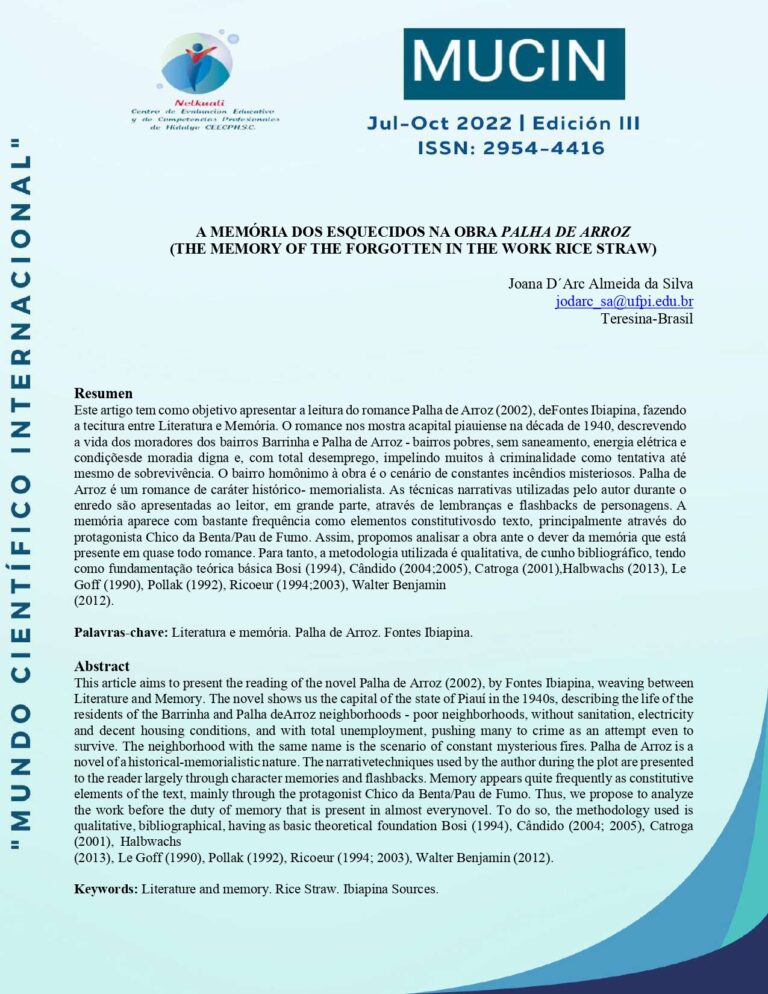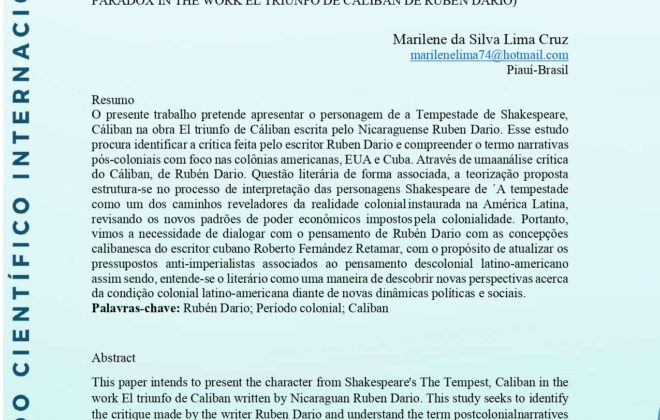A memória dos esquecidos na obra palha de arroz
A memória dos esquecidos na obra palha de arroz
Resumen
Este artigo tem como objetivo apresentar a leitura do romance Palha de Arroz (2002), de Fontes Ibiapina, fazendo a tecitura entre Literatura e Memória. O romance nos mostra a capital piauiense na década de 1940, descrevendo a vida dos moradores dos bairros Barrinha e Palha de Arroz – bairros pobres, sem saneamento, energia elétrica e condições de moradia digna e, com total desemprego, impelindo muitos à criminalidade como tentativa até mesmo de sobrevivência. O bairro homônimo à obra é o cenário de constantes incêndios misteriosos. Palha de Arroz é um romance de caráter histórico- memorialista. As técnicas narrativas utilizadas pelo autor durante o enredo são apresentadas ao leitor, em grande parte, através de lembranças e flashbacks de personagens. A memória aparece com bastante frequência como elementos constitutivos do texto, principalmente através do protagonista Chico da Benta/Pau de Fumo. Assim, propomos analisar a obra ante o dever da memória que está presente em quase todo romance. Para tanto, a metodologia utilizada é qualitativa, de cunho bibliográfico, tendo como fundamentação teórica básica Bosi (1994), Cândido (2004;2005), Catroga (2001), Halbwachs (2013), Le Goff (1990), Pollak (1992), Ricoeur (1994;2003), Walter Benjamin (2012).
Palavras-chave: Literatura e memória. Palha de Arroz. Fontes Ibiapina.
Abstract
This article aims to present the reading of the novel Palha de Arroz (2002), by Fontes Ibiapina, weaving between Literature and Memory. The novel shows us the capital of the state of Piauí in the 1940s, describing the life of the residents of the Barrinha and Palha de Arroz neighborhoods – poor neighborhoods, without sanitation, electricity and decent housing conditions, and with total unemployment, pushing many to crime as an attempt even to survive. The neighborhood with the same name is the scenario of constant mysterious fires. Palha de Arroz is a novel of a historical-memorialistic nature. The narrative techniques used by the author during the plot are presented to the reader largely through character memories and flashbacks. Memory appears quite frequently as constitutive elements of the text, mainly through the protagonist Chico da Benta/Pau de Fumo. Thus, we propose to analyze the work before the duty of memory that is present in almost every novel. To do so, the methodology used is qualitative, bibliographical, having as basic theoretical foundation Bosi (1994), Cândido (2004; 2005), Catroga (2001), Halbwachs (2013), Le Goff (1990), Pollak (1992), Ricoeur (1994; 2003), Walter Benjamin (2012).
Keywords:
Literature and memory. Rice Straw. Ibiapina Sources.




